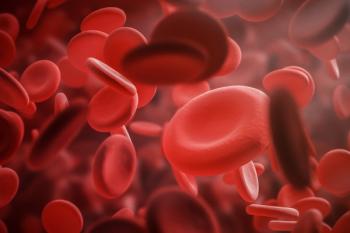
How to reduce toxicity in pediatric cancer survivors
The good news in the area of pediatric cancer is that many such conditions have become curable. The bad news is that chemotherapies, radiation, and surgical treatments used to attain the cures have toxicities that can surface years later. And these toxicities are becoming a problem as more pediatric cancer survivors age into adulthood.
The good news in the area of pediatric cancer is that many such conditions have become curable. The bad news is that chemotherapies, radiation, and surgical treatments used to attain the cures have toxicities that can surface years later. And these toxicities are becoming a problem as more pediatric cancer survivors age into adulthood.
As many as 270,000 survivors of childhood cancers live in the United States. Melissa M. Hudson, M.D., director of the St. Jude After Completion of Therapy Clinic in Memphis, noted that these survivors are at an increased risk of health problems as a result of their cancer treatment. She believes that "the needs of these individuals have not been optimally addressed in the present healthcare environment."
According to Hudson, late treatment effects occur in most adult survivors of childhood cancer, but in about 25% of survivors, adverse effects are severe and life threatening. She commented, "Anticipating potential complications provides the opportunity to improve the survivor's quality of life through preventive or proactive interventions."
The goals of the guidelines are to facilitate better care and outcomes for pediatric cancer survivors, specifically to improve the quality of life and decrease complication-related healthcare costs for pediatric cancer survivors by providing standardized and enhanced follow-up throughout an individual's life. However, they are not intended to replace the clinical judgment of physicians.
Because potential complications and appropriate monitoring are tied to the type of therapy used, the guidelines are organized by therapeutic agent. They are formatted as charts that list the therapeutic agents, potential late problems they may cause, risk factors making long-term complications more likely, factors that put individuals at the highest risk, and suggestions on how often patients should be evaluated and appropriate medical interventions and counseling. They are also cross-referenced to other topics with related toxicities.
In addition, on the Web, the guidelines are linked to patient education information about various subjects pertinent to survivors, including emotional issues, locating appropriate health care, appropriate diet and physical activity, and future health issues. An important benefit of the guidelines is that toxicity information for each cancer treatment is now organized in a single location. As a result, the guidelines can be used as a checklist for pharmacists and other healthcare professionals following patients who are pediatric cancer survivors.
David Henry, M.S., BCOP, FAHSP, associate professor of pharmacy practice and pharmacy specialist in pediatric hematology and oncology, University of Kansas Medical Center, and member of COG, commented, "These guidelines are meant to give you a better standard against which to judge what you are doing, to let you know what you need to be looking for one year down the road, 10 years down the road, etc. With pediatric oncology, now that we're curing so many of our patients, it's become very important to think about those late toxicities."
Henry also noted, "For the past 10 years or more, we've been working really hard on our pediatric oncology protocols to look at places where we could back off therapy, so we don't put people who have a high chance of cure at such risk for late toxicities." These guidelines reflect the information that has been accumulated as well as the success of curing pediatric cancers.
It is the intent of the task force to keep information contained in the guidelines current. As new information becomes available in the literature in research, medical, and nursing journals or from the experience of clinicians, the task force plans to update the guidelines. The guidelines can be accessed on the Web at
Newsletter
Pharmacy practice is always changing. Stay ahead of the curve with the Drug Topics newsletter and get the latest drug information, industry trends, and patient care tips.




